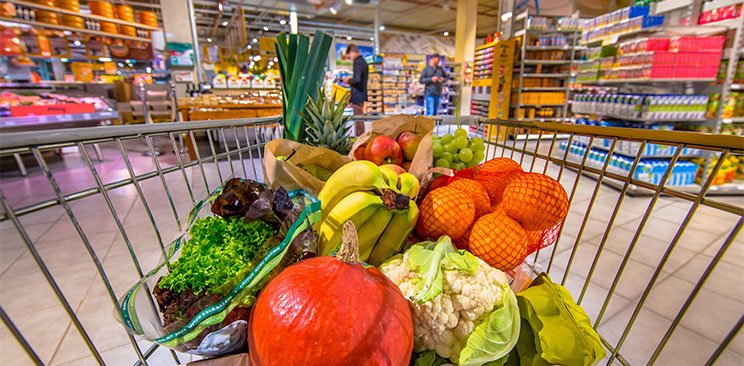MEDIA RELEASE 24.05.2021
The Australian Food and Grocery Council (AFGC) has released a new report, which lays out a vision for doubling the size of Australia’s food and grocery manufacturing sector to $250 billion by 2030.
The report, ‘Sustaining Australia: Food and Grocery Manufacturing 2030,’ produced by the Australian Food and Grocery Council with EQ Economics, has identified major opportunities and vulnerabilities for the sector, as well as potential growth paths.
Food and grocery manufacturing has a strong presence in Australia, as Australia’s largest manufacturing sector, employing 276,000 people with 40 per cent in rural and regional areas. The sector has opportunities to grow through exports, and innovation to meet rapidly changing consumer demand, including in the areas of health and wellness and sustainability. However, the sector has faced a number of challenges over the last decade that have hampered its profitability, investment and therefore future growth potential.
If a strategic approach is taken to the sector’s future, building on the positive direction taken by the federal government through the Modern Manufacturing Strategy, then it has the potential to achieve a high growth path, which will deliver increased jobs, skills and economic output with flow-on benefits, including to Australia’s agriculture sector.
Inaction, the report warns, could not only miss the growth opportunity but risks a further offshoring of manufacturing and a decline in Australia’s long-term ability to meet its own food and grocery needs.
AFGC CEO Tanya Barden said the report recommends steps to secure the future of the sector, including a new grants program to support the uptake of advanced manufacturing technologies, the development of new, sustainable packaging formats and equipment, and the creation of a high-tech training centre to give workers the skills to use advanced manufacturing equipment and emerging digital technologies.
“Australia’s well-deserved ‘clean and green’ reputation will not be enough to ensure our sector remains competitive in either the domestic or export markets into the future,” Ms Barden said.
“The sector’s growth is contingent on significant investment – in new product development, sustainable packaging, advanced manufacturing and digital technologies – to boost the sector’s competitiveness, agility and resilience.”
The report, based on analysis by leading economist Warren Hogan of EQ Economics, finds that:
- Australian food and grocery manufacturing has strong growth potential in domestic and export markets.
- Australia’s food and grocery sector is under pressure from declining profitability due to high costs and a highly concentrated retail marketplace, resulting in a decade of stagnant capital investment and low innovation.
- Australia faces an uneven playing field through foreign governments providing significant financial incentives, and non-tariff barriers to export trade.
- Australian food and grocery manufacturing risks losing global competitiveness unless steps are taken to boost investment in new advanced manufacturing technology to improve efficiency and innovation.
- With a strategic focus, the right policies and incentives, the size of Australia’s food and grocery sector can double to $250 billion by 2030, with a resulting 54 per cent increase in employment to 427,000 people.
If however, settings are not changed, the sector will either “muddle through”, underperforming the broader Australian economy or, at worst, face a progressive decline with increased offshoring of production, job losses and increased import penetration, the report warns.
“Australian food and grocery manufacturing is strong, dynamic and critically important but there are important decisions that need to be made now about the sector’s future,” Ms Barden said.
The full report is available here.
Selected report recommendations
Strategic industry policy
- The AFGC recommends that non-food grocery manufacturing be added to the food and beverage priority manufacturing sector within the Modern Manufacturing Strategy.
- The AFGC recommends that the Minister for Industry, Science and Technology, in consultation with other portfolios, develops an annual set of policy and regulatory reforms that move the sector towards its growth ambition of $250 billion by 2030; and ensures any new government policy or regulatory proposals explicitly consider the impact on the sector’s ability to achieve this goal.
Investment incentives
- The AFGC recommends that the Australian Government allocate additional funds to a dedicated co-investment grant program within the Modern Manufacturing Initiative, specifically for food and grocery manufacturers, to adopt advanced manufacturing technologies that improve efficiency, innovation and global competitiveness.
- The AFGC recommends that the Australian Government implement a co-investment grants program that supports and fast tracks food and grocery manufacturers’ research, development and testing of new sustainable packaging formats, and changes to packaging equipment to facilitate a circular economy.
- The AFGC recommends that the Australian Government alter the eligibility threshold for the temporary full expensing (instant asset write-off) measure to include companies with significant manufacturing capital stock in Australia that don’t meet the alternative eligibility test.
Skills
The AFGC recommends that the Australian Government provide funding for:
- A skills audit to understand the gap between the sector’s current skills capabilities and the needs of a more automated and digitalised food and grocery manufacturing sector.
- A sector-wide, advanced food and grocery manufacturing training centre with access to virtual and augmented reality technology to help train local workers to operate advanced manufacturing equipment and digital technologies, and
- A grant process that supports food and grocery manufacturers to offer on the job training or integrated learning programs that connect the sector with education/ training providers.
Export growth
The AFGC recommends that all governments and industry develop an export growth strategy that aims to deliver food and grocery export growth of 10 per cent per annum to 2030.





